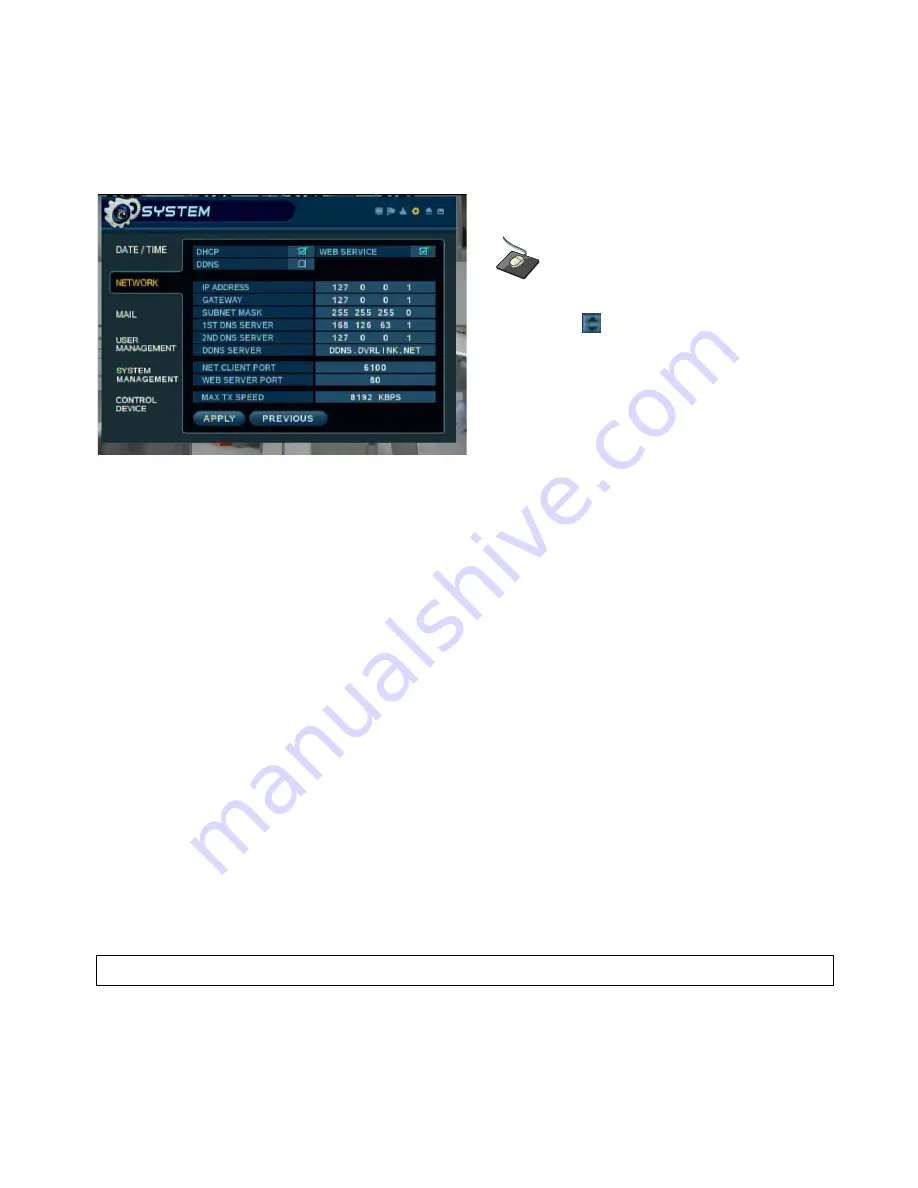
39
SYSTEM : NETWORK
DHCP
: When enabled, the DVR will obtain an IP address automatically if connected to a DHCP server
or router. (If no DHCP server is found, the DVR will use an address of 127.0.0.1)
DDNS
: When enabled, the DVR can be accessed through a Dynamic DNS server. This is a third-party
redirection service which is used if a broadband connection does not have a static IP address.
WEB SERVICE
: When enabled, allows remote connections using Internet Explorer or other web browsers.
IP ADDRESS
: If DHCP is not being used, the IP address can be manually set by the user.
GATEWAY
: If DHCP is not being used, the gateway IP address can be manually set by the user.
SUBNET MASK
: If DHCP is not being used, the subnet mask can be manually set by the user.
1ST DNS SERVER
: If DHCP is not being used, the first DNS server can be manually set by the user.
2ND DNS SERVER
: If DHCP is not being used, the second DNS server can be manually set by the user.
DDNS SERVER
: If DDNS is enabled, the host DDNS server is specified here.
NET CLIENT PORT
: The port number that the DVR uses to support remote connections from the client
software.
WEB SERVER PORT
: The port number that the DVR uses to support remote connection from Internet
Explorer or other web browsers.
MAX TX SPEED
: Specifies the maximum bandwidth that the DVR can use during a remote connection.
NOTE:
If any network settings are modified, the DVR will need to be restarted for changes to take effect.
SYSTEM SETUP
SYSTEM SETUP
Click the
NETWORK
menu. Click on a field to edit.
Then click the button to toggle ON/OFF, or adjust
the value of a selected field.















































